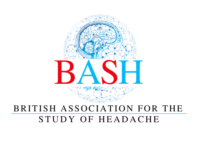Migraine associated symptoms – Dizziness, Vertigo and Vestibular Migraine.
At King’s College London, the Headache team is currently collaborating with the Centre for Vestibular Neurology in Imperial College London and University College London. We are interested in characterising and phenotyping vestibular symptoms in patients with migraine, with the broad aim to raise awareness in the medical community, optimise current guidelines and ultimately, destigmatise patients that presented symptoms previously classified as having FND, and potentially treat them.
Defining vestibular migraine associated symptoms
A plethora of subjective, spontaneous or triggered sensations are reported as a feeling of being “off-balance”. The classification of vestibular symptoms defines them as vertigo when there is a false perception that the surroundings are moving (external), such as spinning or oscillopsia, or when there is a perception of self-motion (internal), such as swaying, tilting, bobbing, sliding or bouncing, or unsteadiness when standing or walking. Dizziness is described as the sensation of disturbed spatial orientation without a false or distorted sense of motion [1].
How common are vestibular symptoms?
In the general population, up to 4/10 people will experience vestibular symptoms at some point during their life, and one of them will experience them frequently.
During the clinical interview in headache clinics, around 20% of patients spontaneously reported vestibular symptoms accompanying the headache [2]. However, when enquired specifically using a questionnaire, this percentage can double [3] and even increase up to 75% when asked directly by a clinician (Fig. 1). Among migraine patients, 33% also described isolated vertigo episodes outside the headache attack [4].
Is Vestibular migraine under-recognised?
Migraineurs have a higher probability of presenting other vertiginous conditions such as benign positional paroxysmal vertigo (BPPV), motion sickness or Meniere’s disease, among others [5]. This overlap, in addition to the late definition of vestibular migraine (VM) [6], and the neglect of vestibular symptoms as part of the migraine attack in the current international diagnostic criteria of migraine [7] may have contributed for VM to be an under-recognised and undertreated problem.
VM is the second most common cause of dizziness after BPPV, reported in between 7-16% of patients with dizziness [8], although this percentage might be much higher.
The current definition involves vestibular symptoms lasting 5 min to 72 h, with concurrent or previous history of migraine and one or more migraine associated symptoms in at least 50% of the vestibular episodes [6]. Indeed, up to 60% of participants with chronic migraine can fulfil VM criteria, and this percentage can increase up to 73% in those with migraine with aura [9].
By the same token, more than half of the patients with persistent postural-perceptual dizziness (PPPD), considered a functional neurological disorder (FND), met criteria for migraine, and 17% for definite VM [10]. In a reverse assessment, almost 40% of patients with migraine qualified for criteria of PPPD (Villar-Martinez, Moreno-Ajona et al, unpublished results).
Sensory sensitivity is common in people with migraine
People with VM, as well as migraine, can be more sensitive to certain stimuli. Visual symptoms simulating motion sickness may trigger classic associated symptoms to migraine, such as nausea and skin tenderness in population with migraine [11], which are of similar intensity and duration of those with vestibular migraine (Fig A) [12].
Interestingly, when a migraine attack is triggered, vestibular symptoms were elicited in 75% (33/44) patients who reported vestibular symptoms during the spontaneous migraine attack, and reproducible in 40% of those who developed them on the first triggering session [13].
Maria Dolores Villar-Martinez Clinical Research Fellow, Kings College Hospital

For more information on research into Headache disorders, see our BASH Research Area.




